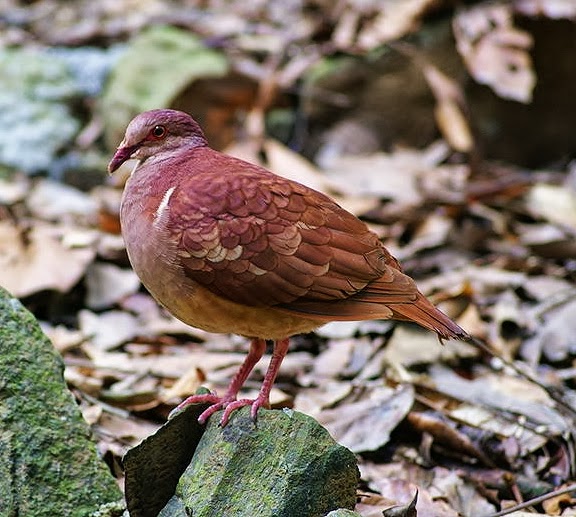 |
| Photo by Kim Hansen (Wikipedia) |
Common name:
ruddy quail-dove (en); pariri (pt); colombe rouviolette (fr); paloma-perdiz rojiza (es); rote erdtaube (de)
Taxonomy:
Order Columbiformes
Family Columbidae
Range:
This species is found from central Mexico to northern Argentina and Uruguay, as well as in the Caribbean.
Size:
These birds are 21-28 cm long and weigh 110-140 g.
Habitat:
The ruddy quail-dove is mostly found in the understorey of lowland rainforests, also using second growths, semi-deciduous forests and coffee and cacao plantations. They are present from sea level up to an altitude of 2.600 m.
Diet:
They forage on the ground, taking fallen fruits and also some seeds and nuts. They are also know to sometimes eat small slugs.
Breeding:
Ruddy quail-doves breed in February-August. The nest is a bowl-shaped structure, made of small twigs and leaves, which is usually placed on the flat top of an old stump or on horizontal fallen trees and branches. The female lays 2 cream or buffy eggs which are incubated by both parents for 11 days. The chicks are raised by both parents and fledge 2 weeks after hatching. Each pair raises 2 broods per season.
Conservation:
IUCN status – LC (Least Concern)
This species has an extremely large breeding range and has a global population estimated at 5-50 million individuals. The ruddy quail-dove is suspected to lose 16-19% of suitable habitat within its range over the next 15 years based on a model of Amazonian deforestation.







